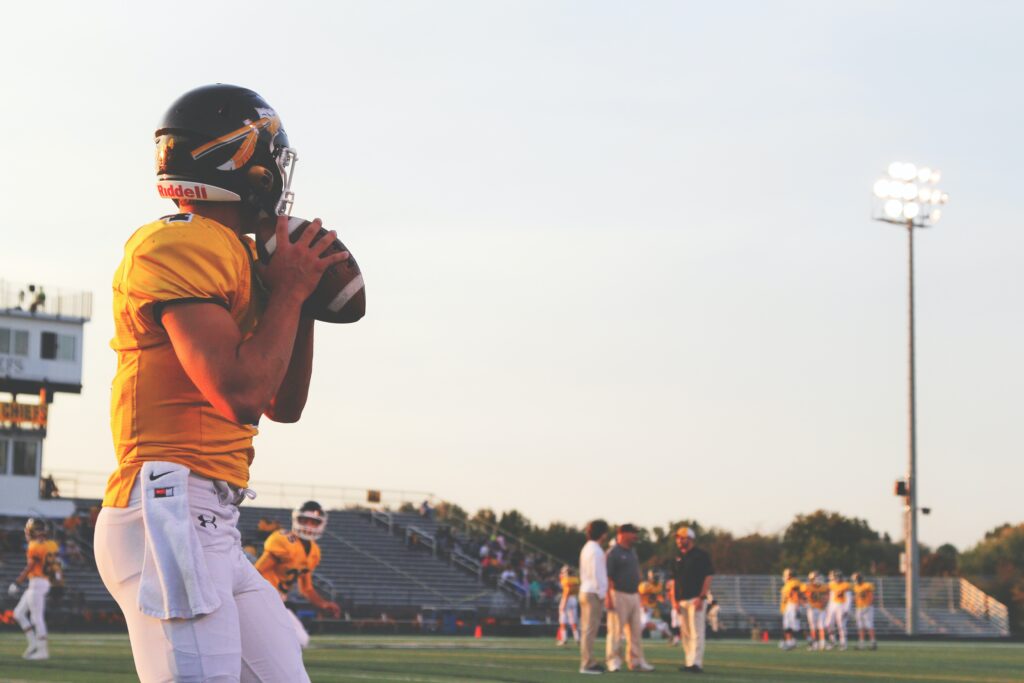
With the American football (not Fußball) season coming to an end towards the playoffs, there are many articles about who will win, etc. My focus, however, is on creativity, innovation, and evolution. According to Conor Orr, in a Sports Illustrated cover story, Aaron Rodgers is the leader in all three of these.
To fully appreciate Rodgers, Orr argues we need to “think of the quarterback as a species onto itself.” Consider how the positions around the QB have changed over the past 20 – 30 years. He points out:
- There used to be only one speed pass rusher, “now there’s at least one on almost every team”
- “Defensive backs have gotten taller and faster.”
- “Defensive tackles are 35 pounds heavier on average, but run the 40 in times that compare favorably with old-school wide receivers.”
Ultimately, all this means, as Orr eloquently puts it, “the pocket, the quarterback’s oasis, has become a feeding ground for predators.”
Along comes the evolution
For his article, Orr interviews Shane Campbell-Staton, an assistant professor of evolutionary biology at Princeton University. His research integrates experimental and methodological techniques to gain a deeper understanding of how human activity shapes biological stress and evolution in the modern world. He’s studied big city lizards in Puerto Rico that evolved to survive the heat and outrun cars racing on busy streets. He’s analyzed elephants in Africa that evolved to produce female offspring with no tusks at a much higher rate (30% as opposed to 18.5%) in response to poaching threats. Orr applies Campbell-Stanton’s perspective: “It’s like Jurassic Park—life finds a way, right?” to football.
Quarterbacks, led by Aaron Rogers, after years of stagnancy and groupthink, are opening their minds to achieve stunning results. The evolution or learned adaptation, has happened in a burst and not as a slow, gradual change over time as Darwin.
Historically, the quarterback was taught to plant the lead foot securely to ensure an accurate delivery. Aaron developed a new approach called the “Foot Pop.” If you have watched him over the years, his biggest passes are using the Foot Pop. Orr writes, “it’s like watching a magician, even though you know the result, you still watch.” This innovation occurred due to his bad knee; Rodgers tells Orr he had to figure out how to offset the pressure on that knee. “The other part of it was just figuring out how to get ground force when throwing,” he said. The Foot Pop launches his throwing motion and allows him to rotate his core faster and farther through his delivery.
Meanwhile, Rodgers says he continues to daydream about adaptations he can make to his mechanics. And football is following his lead. QB coaches used to stamp the unstructured moments out, but Orr argues, “they could be saving the quarterback species one lifted toe and sidearm sling at a time.”
Evolving our industry too
Along with Rodgers, football fans can see that each quarterback from Patrick Mahomes or Lamar Jackson, to Kyler Murray and others has a unique style. They are evolving to lead their teams to victory. Their innovation and creativity are part of what makes watching the game so fun.
Meanwhile, process engineers can learn from this adaptation too. I don’t often compare myself to Rodgers — although we both practice “hot yoga” — but I am just as intent on striving to be creative and innovative. If only there were a Super Bowl for process engineering!

